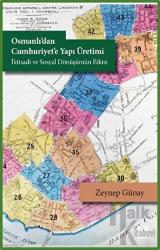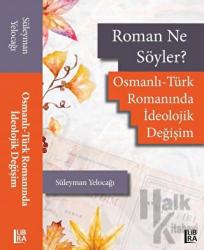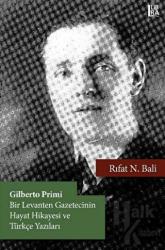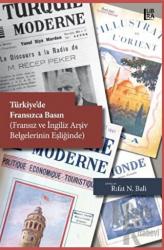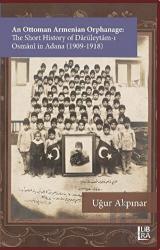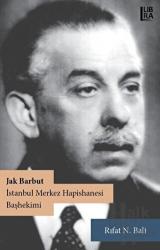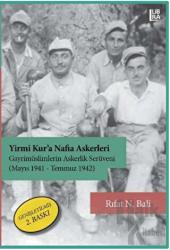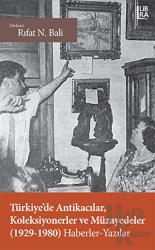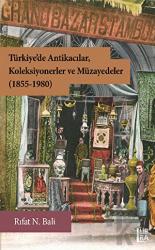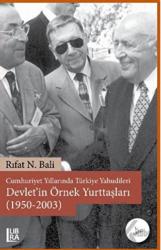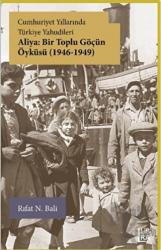Portraits From a Bygone İstanbul: Georg Mayer and Simon Brod
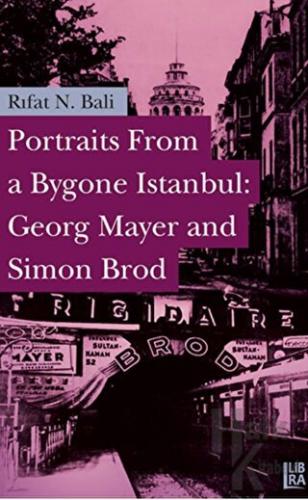
Bu kitap çoktan mazide kalmış olan bir İstanbul'da yaşamış olan iki efsanevi Yahudi tüccarın hayatlarını anlatmakta. Her ikisi de Aşkenaz Musevisi olan Georg Mayer ve Simon Brod bugün ancak hatıra kitaplarında okuduğumuz bir İstanbul atmosferinde yaşadılar. Georg Mayer İstanbul'da büyük mağazacılık geleneğini başlatan birkaç müesseseden biriydi. Simon Brod ise Sultanhamam tekstil piyasasının önde gelen tüccarlarındandı. Brod aynı zamanda İkinci Dünya Savaşı yıllarında Türkiye'den transit geçerek Filistin'e gitmek isteyen Yahudi mültecilerin yardımına koşan ve aynı mülteciler tarafından adı minnetle anılan efsanevi bir isimdi. Birçok yazılı ve sözlü kaynaktan istifade edilerek hazırlanan bu çalışma sayesinde çoktan tarihe gömülmüş sıra dışı iki insan gözlerimizin önünde canlanmakta.
This book recounts the tale of Georg Mayer and Simon Brod, two legendary Jewish businessmen who lived and worked in Istanbul in the first half of the twentieth century, in a world that has long since vanished in all but memory. Both men were Ashkenazi Jews operating within a largely Sephardic cultural sphere. Mayer was the founder of one of several pioneers in bringing the department store to Istanbul (and, by extension, to Turkey). For his part, Brod was one of the leading 'Sultanhamam' textile merchants, but apart from this he is remembered among the Jewish population as the person who, during the Second World War, devoted his own energies and resources to assisting Jewish refugees fleeing Nazi Europe for Palestine. By tracking down a great number of otherwise overlooked written and oral sources the author has succeeded not only in rescuing these men's stories from oblivion, but in the process has also brought to life for us both the central characters and the era in which they lived.
- Açıklama
Bu kitap çoktan mazide kalmış olan bir İstanbul'da yaşamış olan iki efsanevi Yahudi tüccarın hayatlarını anlatmakta. Her ikisi de Aşkenaz Musevisi olan Georg Mayer ve Simon Brod bugün ancak hatıra kitaplarında okuduğumuz bir İstanbul atmosferinde yaşadılar. Georg Mayer İstanbul'da büyük mağazacılık geleneğini başlatan birkaç müesseseden biriydi. Simon Brod ise Sultanhamam tekstil piyasasının önde gelen tüccarlarındandı. Brod aynı zamanda İkinci Dünya Savaşı yıllarında Türkiye'den transit geçerek Filistin'e gitmek isteyen Yahudi mültecilerin yardımına koşan ve aynı mülteciler tarafından adı minnetle anılan efsanevi bir isimdi. Birçok yazılı ve sözlü kaynaktan istifade edilerek hazırlanan bu çalışma sayesinde çoktan tarihe gömülmüş sıra dışı iki insan gözlerimizin önünde canlanmakta.
This book recounts the tale of Georg Mayer and Simon Brod, two legendary Jewish businessmen who lived and worked in Istanbul in the first half of the twentieth century, in a world that has long since vanished in all but memory. Both men were Ashkenazi Jews operating within a largely Sephardic cultural sphere. Mayer was the founder of one of several pioneers in bringing the department store to Istanbul (and, by extension, to Turkey). For his part, Brod was one of the leading 'Sultanhamam' textile merchants, but apart from this he is remembered among the Jewish population as the person who, during the Second World War, devoted his own energies and resources to assisting Jewish refugees fleeing Nazi Europe for Palestine. By tracking down a great number of otherwise overlooked written and oral sources the author has succeeded not only in rescuing these men's stories from oblivion, but in the process has also brought to life for us both the central characters and the era in which they lived.
Format:Kitap
- Taksit Seçenekleri
- Axess KartlarTaksit SayısıTaksit tutarıGenel ToplamTek Çekim290,50290,502151,06302,123102,64307,93652,29313,74935,51319,55Finansbank KartlarıTaksit SayısıTaksit tutarıGenel ToplamTek Çekim290,50290,502151,06302,123102,64307,93652,29313,74935,51319,55Bonus KartlarTaksit SayısıTaksit tutarıGenel ToplamTek Çekim290,50290,502151,06302,123102,64307,93652,29313,74935,51319,55Paraf KartlarTaksit SayısıTaksit tutarıGenel ToplamTek Çekim290,50290,502151,06302,123102,64307,93652,29313,74935,51319,55Maximum KartlarTaksit SayısıTaksit tutarıGenel ToplamTek Çekim290,50290,502151,06302,123102,64307,93652,29313,74935,51319,55World KartlarTaksit SayısıTaksit tutarıGenel ToplamTek Çekim290,50290,502151,06302,123102,64307,93652,29313,74935,51319,55Diğer KartlarTaksit SayısıTaksit tutarıGenel ToplamTek Çekim290,50290,502--3--6--9--
- Yorumlar
- Yorum yazBu kitabı henüz kimse eleştirmemiş.
- Yayınevinin Diğer Kitapları
- Yazarın Diğer Kitapları



